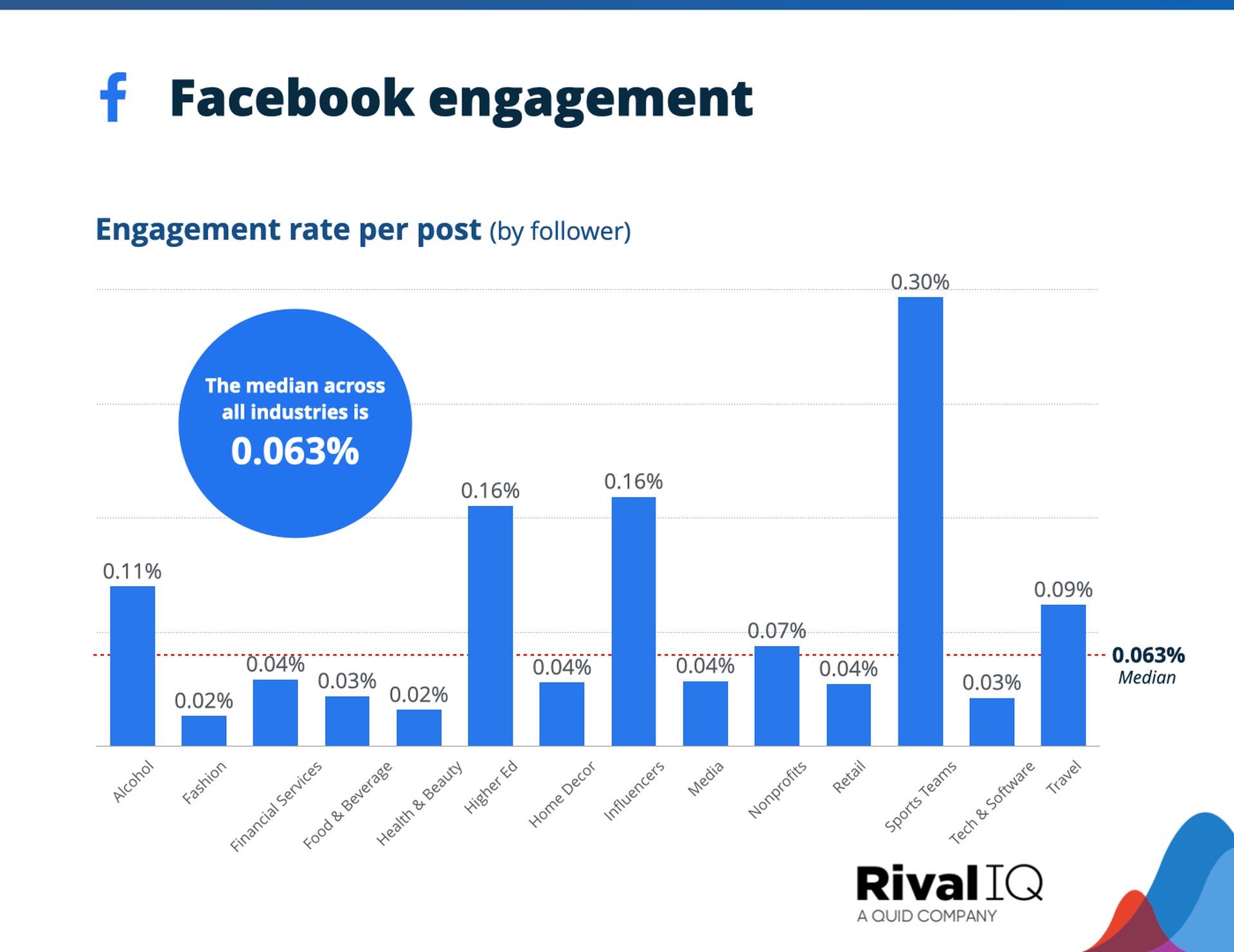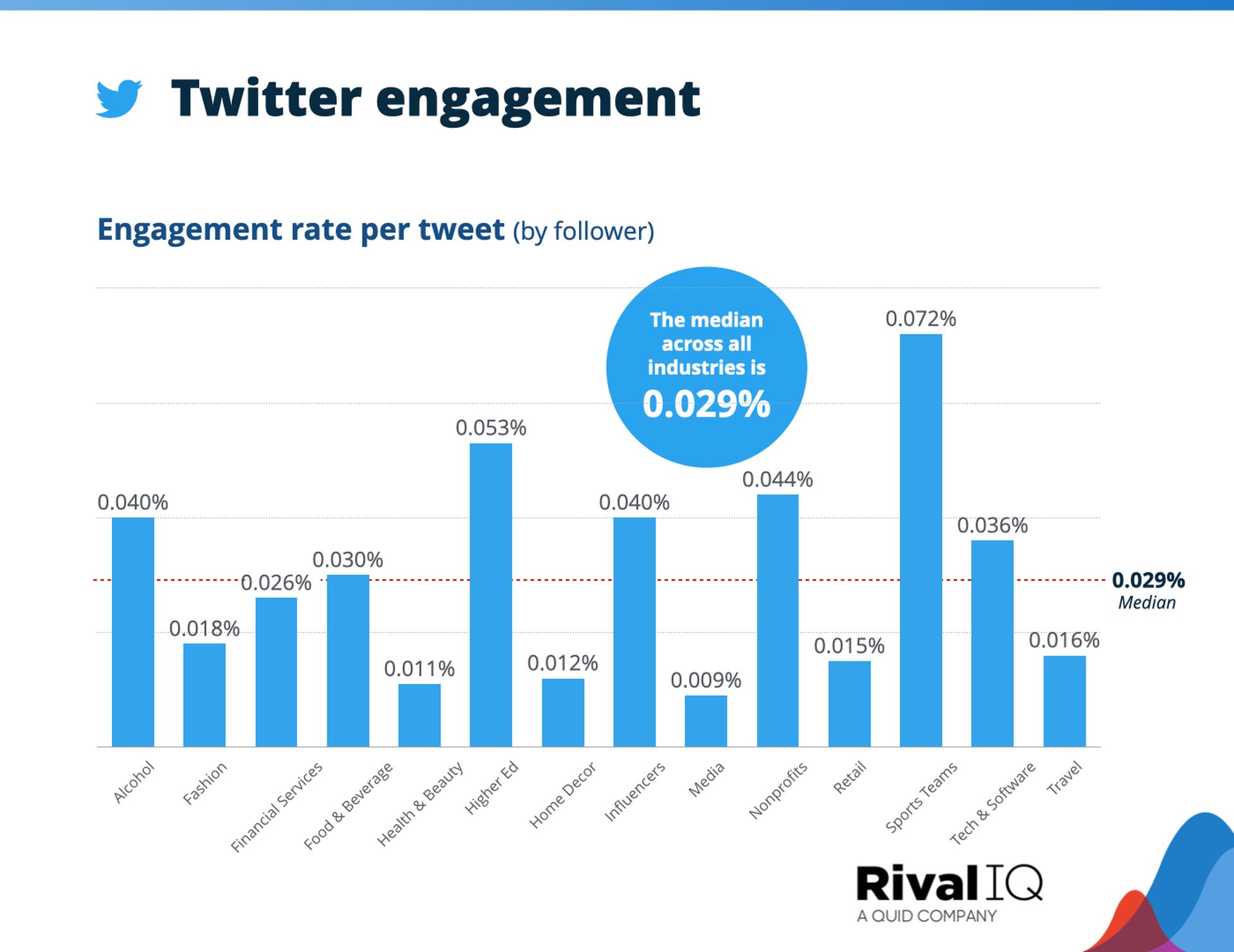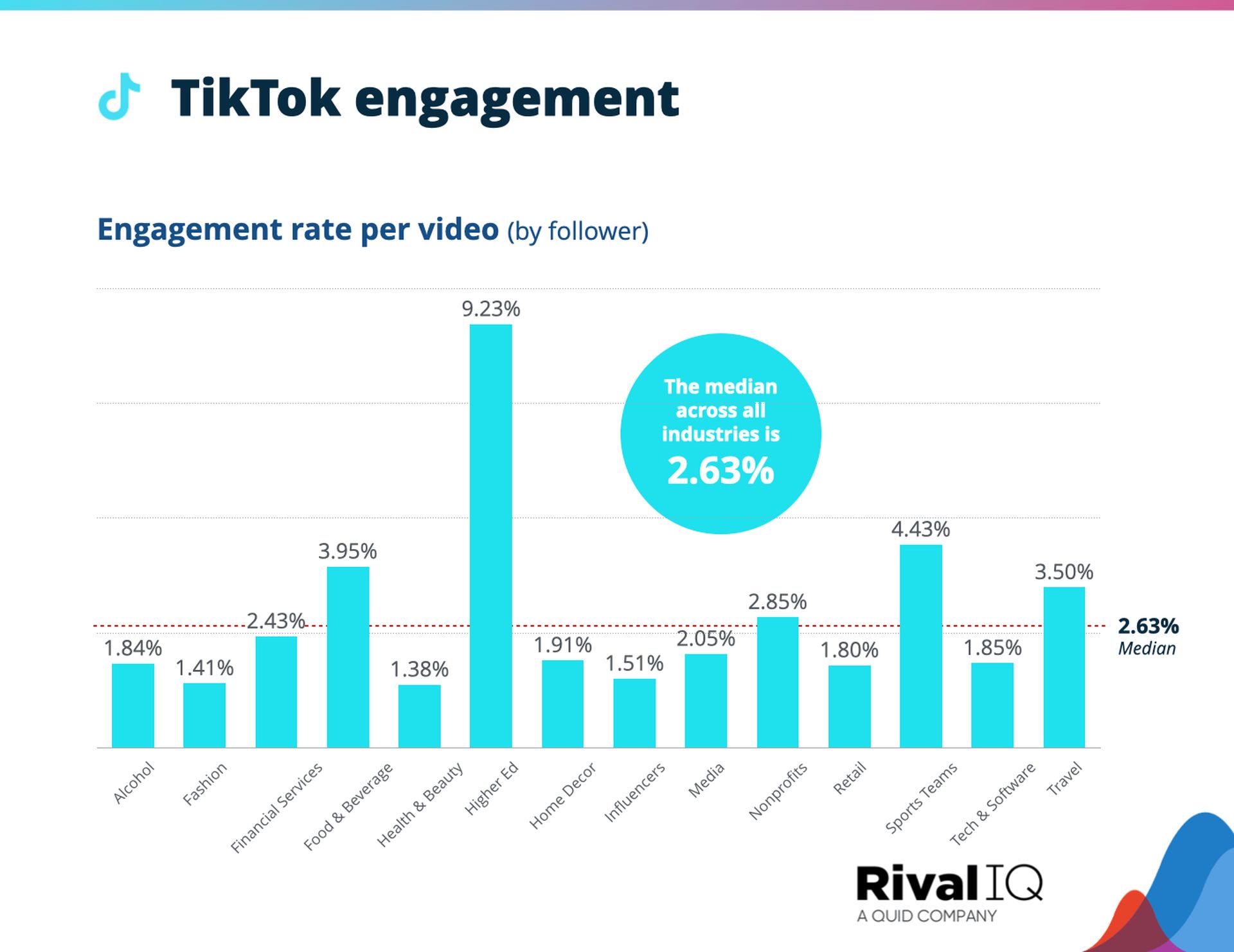The latest Social Media Benchmarks report from Rival IQ offers much-needed context, revealing average engagement rates across various industries on major social media platforms.
With social media referrals trending downward for many brands, it’s getting harder to gauge the true performance of your content.
Are those numbers dipping because your strategies are failing, or are larger platform changes impacting reach and engagement?
Let’s review the Social Media Benchmarks report from Rival IQ together.
Key insights from the Social Media Benchmarks report
Before diving into specific numbers, it’s important to understand the broader landscape. Reduced engagement isn’t just an issue your brand is facing.
Several factors might be at play:
- Changing consumption habits: Many users now prefer passive content consumption on social media, rather than active engagement. This shift has implications for how we measure social media success
- Reduced organic reach: Platforms continue to adjust algorithms, often prioritizing AI-recommended content over organic brand posts
- Increased competition: The sheer volume of content vying for attention on social media intensifies competition for visibility
The Rival IQ report, based on extensive data analysis, highlights some key trends (you can access the full report here):
Facebook is a mixed bag
While the median engagement rate on Facebook showed a slight uptick to 0.063%, it’s still incredibly low overall. Industries like sports, higher education, and alcohol brands continue to hold a slight advantage.
The overall engagement rate is low, and the persistent strength of specific sectors points to the importance of content that ignites passionate communities. Sports content often sparks instant reactions and debate, while higher education institutions may leverage their authority and alumni networks more effectively.
For brands outside those favored industries, Facebook’s potential lies in building engaged communities around niche interests or values. Consider utilizing Facebook Groups to foster more meaningful interactions and boost engagement.
Given the decline in organic reach, exploring paid options like targeted Facebook ads might be necessary to amplify your message, even if your organic engagement seems low.

Instagram is declining engagement
Average engagement on Instagram dropped to 0.43%. This marks a steady decline over the last several years.
Instagram’s constant focus on short-form video content (Reels) to compete with TikTok has significantly impacted brand engagement. Those who haven’t adapted to this format with high-quality Reels are likely experiencing reduced reach.
While Reels are crucial, don’t neglect other formats entirely. Static posts, carousels, and Instagram Stories still have a role to play, particularly in showcasing products or highlighting longer-form stories.
Resist the urge to jump on every viral trend just for visibility. Instagram users reward authenticity, so stay true to your brand voice while experimenting with newer content forms.

Twitter is stable but numbers are low
Social Media Benchmarks has shown us that Twitter (despite its various controversies) shows a relatively steady engagement rate of 0.029%, which is unsurprising given its historically low referral traffic rates.
Twitter has always been less about mass brand awareness and more about real-time conversation, niche interest communities, and timely updates.
If your brand operates in a space where breaking news or industry insights are important, Twitter still holds value as seen on the Social Media Benchmarks report. Prioritize engaging with your audience, providing valuable information, and participating in relevant hashtags.
Twitter’s advertising platform may offer opportunities for targeted reach, particularly when timed around crucial events or newsworthy topics relevant to your industry.

The fall of TikTok
While TikTok’s average engagement rate per clip has declined to 2.63%, it remains significantly higher than other platforms, according to the Social Media Benchmarks report. Brands mastering the platform’s unique style can still achieve substantial reach.
TikTok’s initial explosive growth phase is leveling off. As more brands flood the platform, competition for attention increases naturally, hence the drop in engagement.
Success on TikTok demands a deep understanding of viral trends, sounds, and video editing techniques catering to short attention spans. Brands that prioritize original, entertaining content will have a greater chance of cutting through the noise.
Collaborations with niche-specific TikTok influencers can offer significant brand exposure. Identify creators with genuine alignment to your brand rather than just focusing on follower count.

What does Social Media Benchmarks report mean for your brand?
Social Media Benchmarks report don’t imply your content quality is poor. They reflect a wider social media environment where all brands are contending with reduced engagement.
Here’s how to adjust:
- Focus on audience understanding: Success depends on tailoring your presence to each platform’s distinct audience and their preferences
- Re-evaluate KPIs: Consider shifting key metrics away from engagement alone. Track conversions, email sign-ups, or other indicators that directly align with business goals
- Embrace adaptability: Stay ahead of the curve by constantly monitoring new trends, algorithm updates, and emerging platforms
The Rival IQ’s Social Media Benchmarks report highlights challenges shared by many brands. Understanding these larger trends helps you analyze your performance realistically.
Remember, success in social media isn’t simply about chasing likes and comments; it’s about connecting with the right audience in meaningful ways and driving tangible business results.
Featured image credit: Joanna Kosinska/Unsplash.





